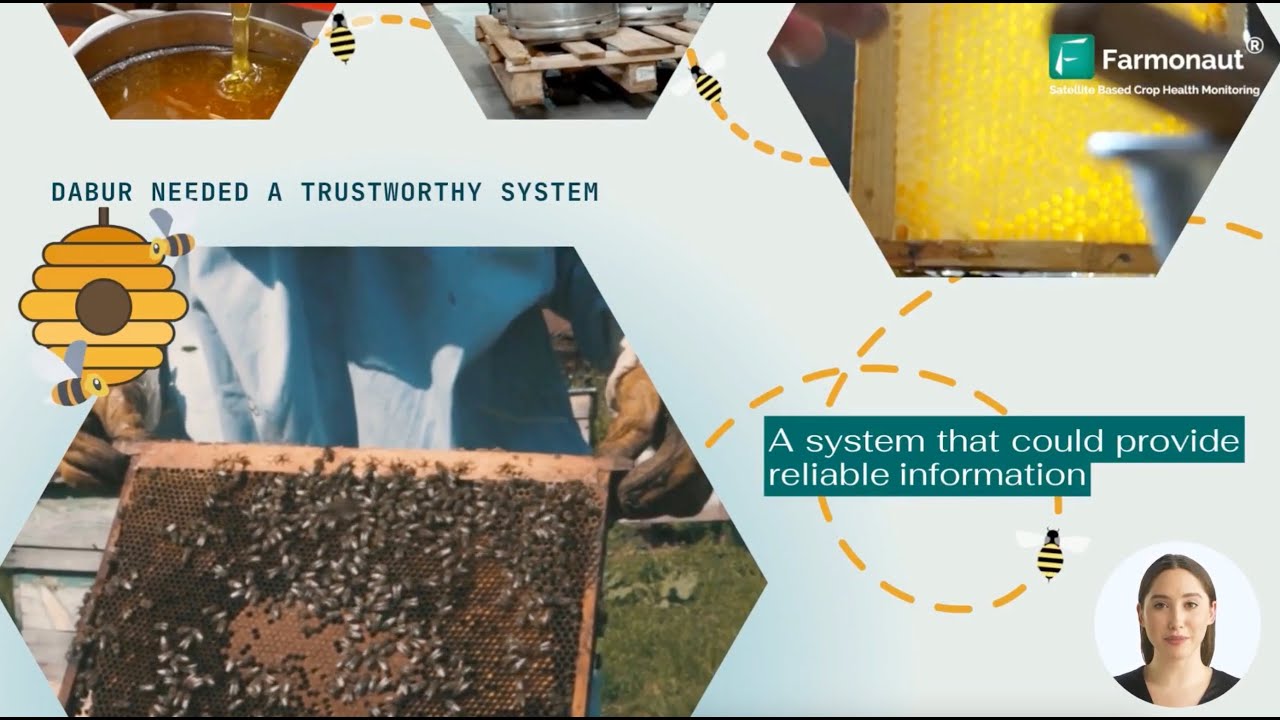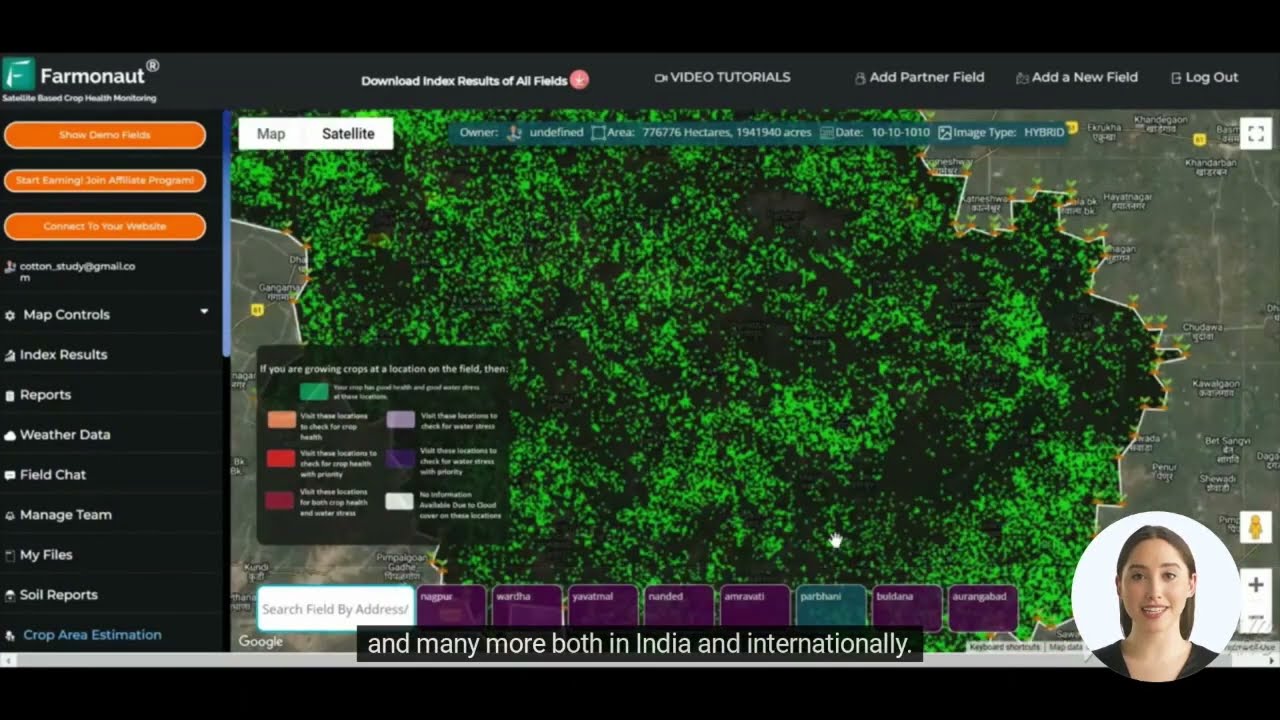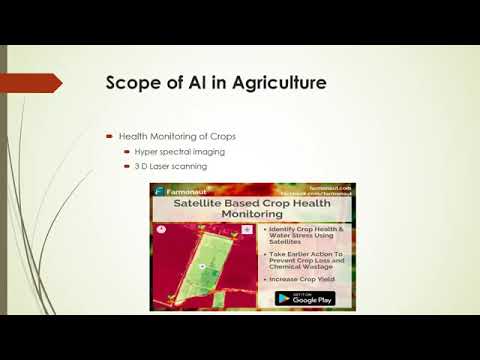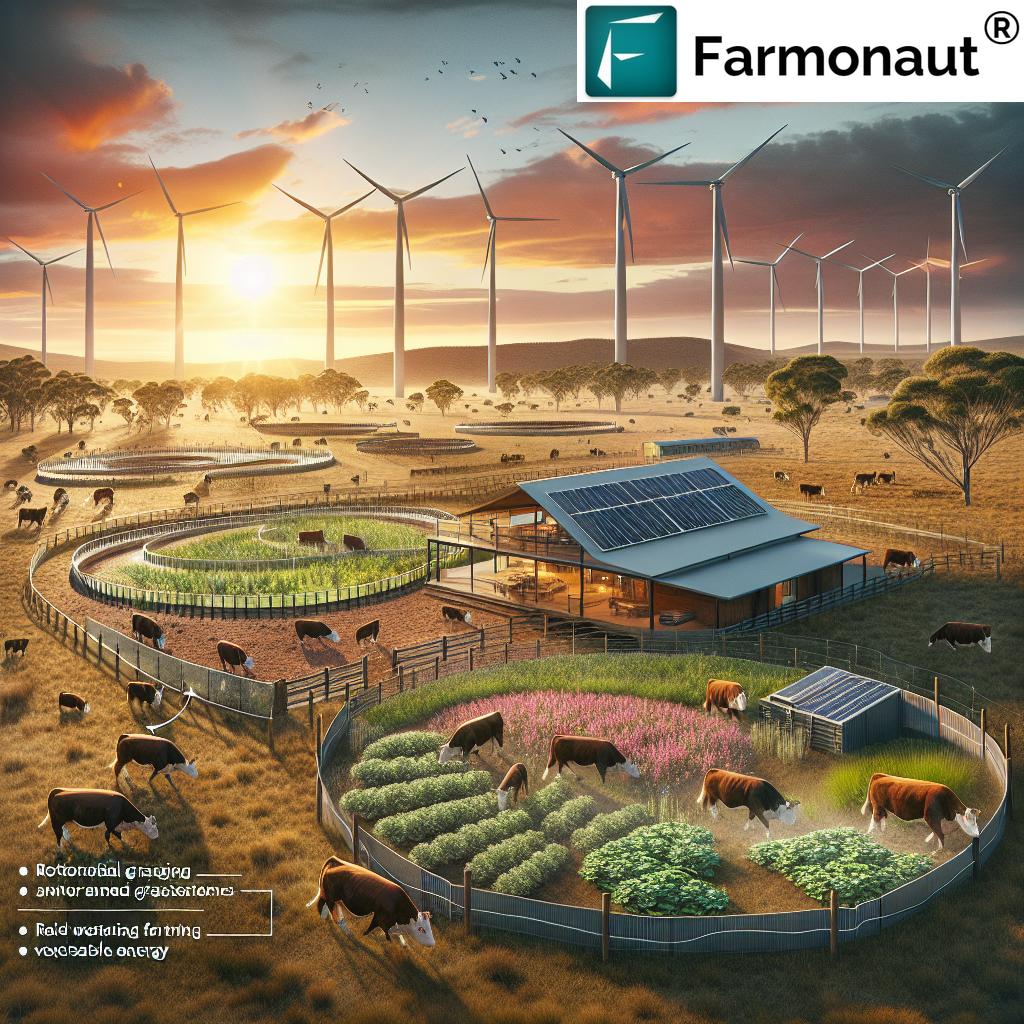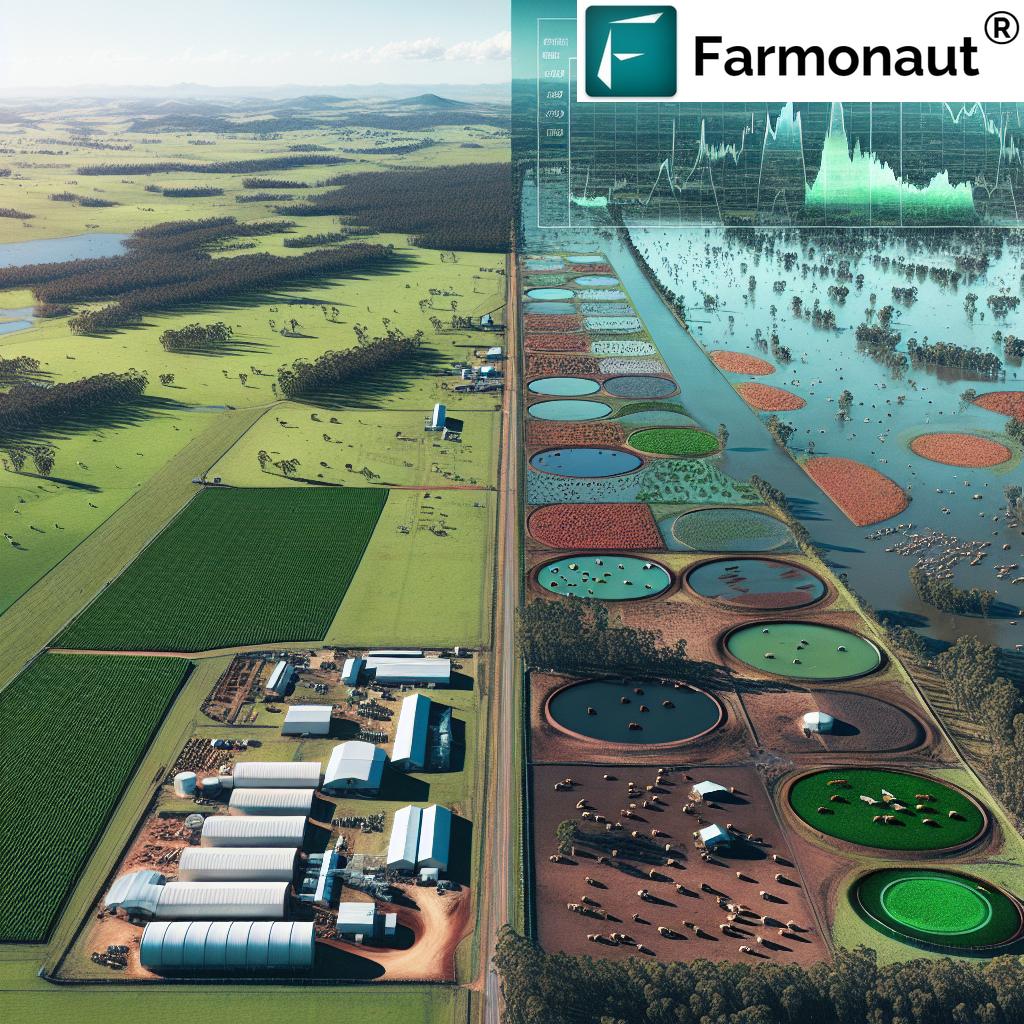Boosting Australian Agriculture: How Native Wildflowers Enhance Honey Bee Pollination and Crop Yields
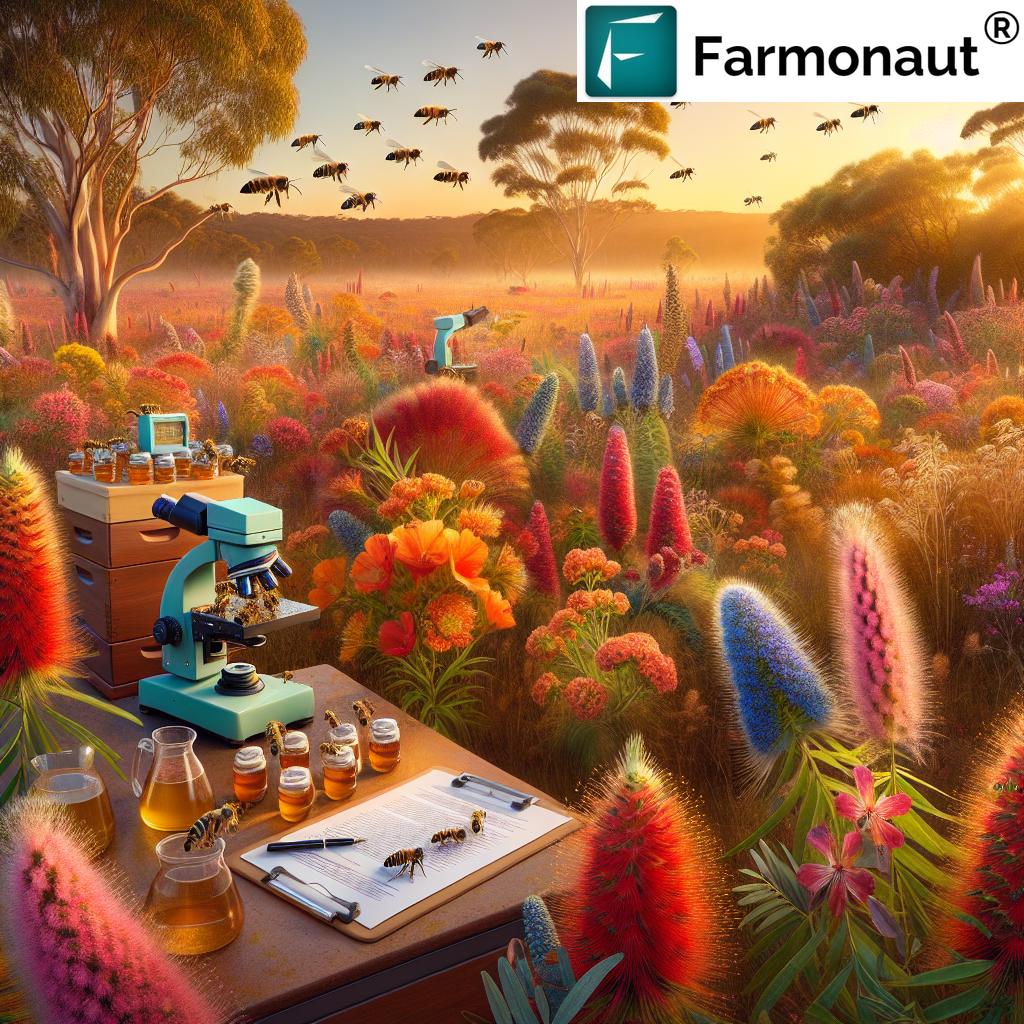
“Australian researchers analyze pollen from hives over 365 days to determine bee preferences for native vs. exotic wildflowers.”
In the vast landscapes of Australia, a groundbreaking research project is underway, promising to revolutionize the way we think about honey bee pollination and its impact on crop yields. At Farmonaut, we’re excited to explore this fascinating study that compares native and exotic plant pollination to improve crop yields and support agricultural sustainability. This innovative research has far-reaching implications for the Australian honey industry and agriculture as a whole.
The Buzz About Honey Bee Pollination
Honey bees play a crucial role in our ecosystem and agricultural practices. These industrious insects are responsible for pollinating a wide variety of crops, contributing significantly to food production worldwide. In Australia, the honey industry is not only a source of delicious golden nectar but also a vital component of the agricultural sector.
The research project we’re discussing today aims to uncover the intricate relationships between honey bees, native Australian wildflowers, and exotic plant species. By understanding these connections, we can develop more effective strategies for enhancing crop pollination and supporting bee populations.
Native vs. Exotic: A Floral Face-off
One of the key aspects of this study is the comparison between native Australian wildflowers and exotic plant species in terms of their effectiveness in supporting honey bee populations and enhancing crop pollination. This research could provide valuable insights into the best floral resources for bees, potentially reshaping our approach to agricultural landscapes.
To give you a clearer picture of how native and exotic plants stack up against each other, we’ve prepared a comparative analysis:
| Plant Type | Flowering Season | Pollen Abundance | Nectar Quality | Bee Visitation Frequency | Impact on Crop Yield | Sustainability Score |
|---|---|---|---|---|---|---|
| Native: Eucalyptus | Year-round (species dependent) | High | High | 40-50 visits/hour | 15-20% increase | 9/10 |
| Exotic: Lavender | Summer | Medium | High | 30-40 visits/hour | 10-15% increase | 6/10 |
| Native: Banksia | Winter-Spring | Medium | High | 35-45 visits/hour | 12-18% increase | 8/10 |
| Exotic: Clover | Spring-Summer | High | Medium | 25-35 visits/hour | 8-12% increase | 7/10 |
| Native: Grevillea | Spring-Summer | Medium | High | 30-40 visits/hour | 10-15% increase | 8/10 |
| Exotic: Borage | Summer | High | High | 35-45 visits/hour | 12-17% increase | 5/10 |
This table highlights the potential advantages of native Australian plants in supporting bee populations and enhancing crop yields. However, it’s important to note that a diverse mix of both native and exotic species may provide the best overall support for honey bees and agricultural productivity.
Cutting-edge Pollen Analysis Techniques
At the heart of this research is the use of advanced pollen analysis techniques. These methods allow scientists to identify and quantify the types of pollen collected by honey bees, providing valuable insights into their foraging preferences and dietary patterns across different seasons.
Some of the key techniques employed in this study include:
- Microscopy: Traditional light microscopy is used to identify pollen grains based on their unique morphological features.
- DNA Sequencing: Advanced genetic analysis techniques help identify plant species from pollen samples with high accuracy.
- Chemical Analysis: Techniques such as gas chromatography and mass spectrometry can provide information about the chemical composition of pollen, offering insights into its nutritional value for bees.
These methods, combined with data from hive monitoring and crop yield assessments, paint a comprehensive picture of the relationships between bees, plants, and agricultural productivity.
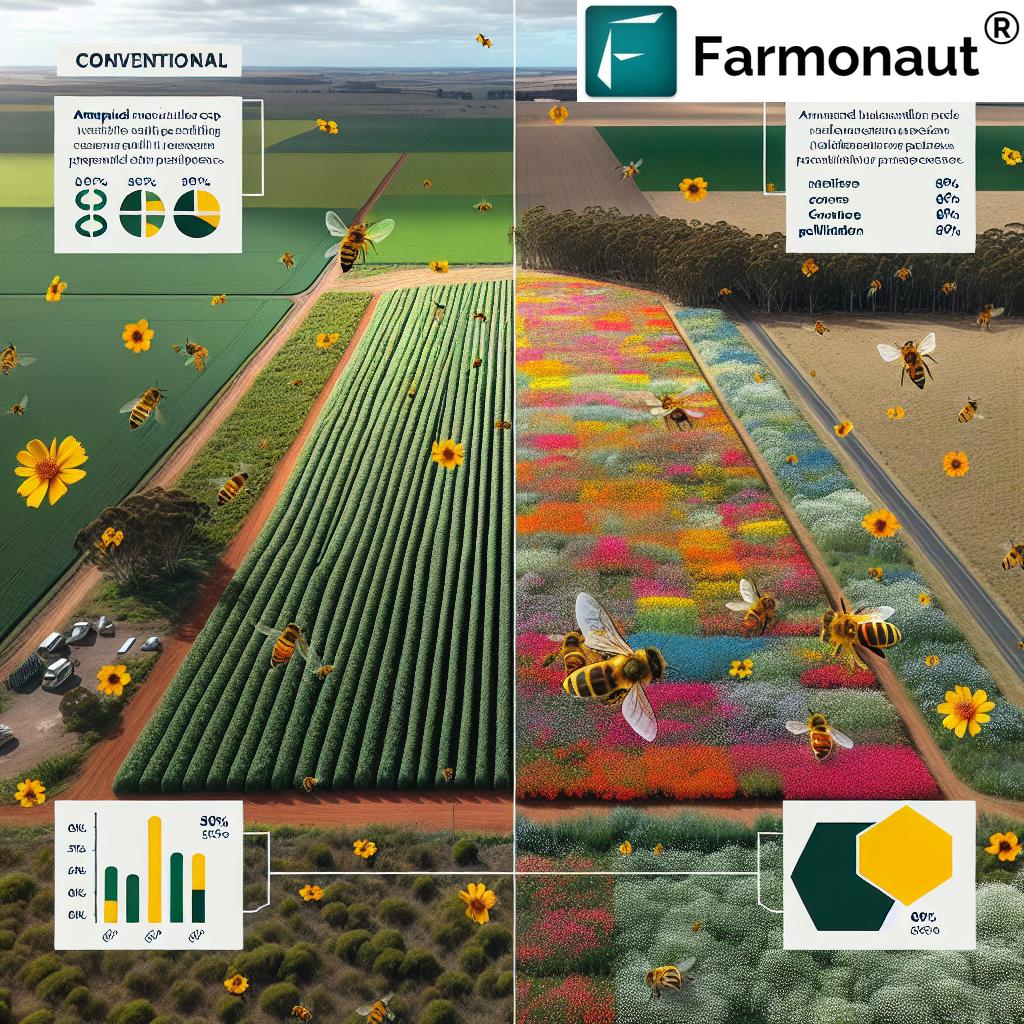
Seasonal Shifts in Bee Foraging
One of the fascinating aspects of this research is the exploration of how honey bee foraging patterns change throughout the year. By analyzing pollen samples collected from hives over a full 365-day period, researchers can identify key plant species that are crucial for bee nutrition during different seasons.
This information is particularly valuable for developing bee-friendly farming practices, especially during periods when crops are not in flower. By ensuring a year-round supply of suitable floral resources, we can support healthier and more robust bee populations, which in turn leads to improved crop pollination when it’s needed most.
The Role of Wildflower Seed Mixes
A key objective of this study is to determine whether honey bees show a preference for native or exotic wildflower seed mixes. This information could be invaluable for farmers and beekeepers looking to enhance floral resources in agricultural landscapes.
Wildflower seed mixes offer several potential benefits:
- Increased biodiversity in agricultural areas
- Extended flowering seasons to support bees year-round
- Improved soil health and erosion control
- Enhanced aesthetic value of farmland
By identifying the most effective combinations of native and exotic wildflowers, we can create optimized seed mixes that provide maximum benefit to both honey bees and crop production.
“Targeted floral enhancements can boost honey bee populations and improve crop pollination efficiency by up to 30%.”
Implications for the Australian Honey Industry
The findings of this research have significant implications for the Australian honey industry. By understanding which plant species are most valuable for honey production and bee health, beekeepers can make more informed decisions about hive placement and management practices.
Some potential benefits for the honey industry include:
- Improved honey yields through strategic floral resource management
- Enhanced honey quality and flavor profiles by leveraging preferred native plant species
- Increased resilience of bee populations to environmental stresses
- New marketing opportunities highlighting the unique characteristics of Australian native floral honey
These advancements could help strengthen Australia’s position in the global honey market while supporting sustainable agricultural practices.
Enhancing Agricultural Sustainability
At Farmonaut, we’re particularly excited about the potential of this research to contribute to more sustainable agricultural practices. By identifying key plant species that support both honey bee populations and crop pollination, we can work towards creating more balanced and resilient agricultural ecosystems.
Some of the ways this research could enhance agricultural sustainability include:
- Reducing reliance on managed honey bee colonies for crop pollination
- Promoting the use of native plant species in agricultural landscapes
- Improving biodiversity and ecosystem services on farmland
- Developing more effective integrated pest management strategies
These outcomes align perfectly with our mission at Farmonaut to make precision agriculture more accessible and sustainable for farmers worldwide.
Leveraging Technology for Agricultural Innovation
While this research focuses on honey bee pollination and floral resources, it’s important to note how technology can complement these efforts in advancing agricultural practices. At Farmonaut, we offer a range of innovative solutions that can support farmers and researchers in their quest for more sustainable and productive agriculture.
Our satellite-based crop health monitoring system, for example, can help farmers track the impact of floral enhancements on overall crop health and productivity. By combining this data with insights from bee pollination research, we can develop more comprehensive strategies for optimizing agricultural landscapes.
Explore our satellite-based farm management solutions:
For those interested in integrating our data into their own systems, we offer robust API solutions:
The Future of Bee-Friendly Farming
As we look to the future, the insights gained from this research could revolutionize the way we approach bee-friendly farming practices. By understanding the complex relationships between honey bees, native wildflowers, and agricultural crops, we can develop more holistic approaches to farm management that benefit both food production and ecosystem health.
Some potential future developments include:
- Precision planting of wildflower strips tailored to local bee populations and crop types
- Development of crop varieties that offer enhanced nectar and pollen resources
- Integration of floral resource management into smart farming systems
- Creation of pollinator corridors to support bee movement across agricultural landscapes
At Farmonaut, we’re committed to staying at the forefront of these developments, offering farmers the tools and insights they need to implement these innovative practices effectively.
Collaborating for a Sustainable Future
The success of this research and its practical application in agriculture relies on collaboration between various stakeholders. Farmers, beekeepers, researchers, and technology providers all have crucial roles to play in translating these findings into real-world benefits.
We encourage farmers and agricultural professionals to stay informed about the latest developments in this field and consider how they might incorporate bee-friendly practices into their operations. By working together and leveraging innovative technologies, we can create a more sustainable and productive future for Australian agriculture.
Empowering Farmers with Technology
As we continue to explore the fascinating world of honey bee pollination and its impact on agriculture, it’s crucial to remember the role that technology plays in modern farming. At Farmonaut, we’re dedicated to providing farmers with the tools they need to make informed decisions and optimize their operations.
Our mobile apps offer on-the-go access to critical farm data and insights:
Conclusion: A Buzz-worthy Future for Australian Agriculture
As we’ve explored in this article, the ongoing research into honey bee pollination and floral resources holds immense promise for the future of Australian agriculture. By understanding and leveraging the relationships between native wildflowers, honey bees, and crop yields, we can work towards a more sustainable and productive agricultural sector.
At Farmonaut, we’re excited to be part of this journey, offering innovative technologies that complement these research efforts and empower farmers to implement more effective and sustainable practices. Together, we can create a future where agriculture works in harmony with nature, supporting both food production and ecosystem health.
FAQs
- Q: How does native plant pollination differ from exotic plant pollination?
A: Native plants have co-evolved with local pollinators, often providing better-suited nectar and pollen resources. They may also bloom at times that better align with local bee life cycles. - Q: What are some common Australian native plants that support honey bees?
A: Eucalyptus, Banksia, Grevillea, and Melaleuca are among the native Australian plants that are highly beneficial for honey bees. - Q: How can farmers incorporate more bee-friendly practices into their operations?
A: Farmers can plant wildflower strips, reduce pesticide use, provide water sources for bees, and maintain diverse crop rotations to support bee populations. - Q: What role does technology play in enhancing bee pollination and crop yields?
A: Technologies like satellite imaging and AI can help farmers monitor crop health, optimize resource use, and identify areas where floral enhancements could be most beneficial. - Q: How might climate change impact honey bee pollination in Australia?
A: Climate change could alter flowering times and distributions of plants, potentially creating mismatches between bee activity and floral resource availability. Adaptive management strategies will be crucial.





